South Africa is the grand dame of African safari destinations, a country that offers experiences for every age and level of adventure. A safari here could be just two hours. Or it could be two weeks.
The South African wilderness evokes. 80% of the world’s rhinos live here. Leopards are found abundantly. Springbok and kudu dominate the plains. Visit South Africa and encounters with the big five are almost guaranteed, although a typical big-five safari isn’t the best the country can offer.
More than anywhere else, a South Africa safari injects contemporary luxury into the wildlife experience. Think of elephants drinking from your plunge pool or fine dining picnics out in the bush. You do not need to leave your comfort zone in order to enjoy an intimate African safari – that makes South Africa an idolised destination for a first-time safari or first-time visit to Africa.
This planning guide answers frequently asked questions and talks you through how to plan a South Africa safari, including where and when to go, along with non-safari destinations to consider.
Essential Information for Visiting South Africa

What’s so good
South Africa makes safari easy. Great tracts of wilderness are accessible, with lodges providing contemporary luxury in the bush. All the famous animals are here, with sightings of usually rare leopards and rhinos one of the highlights. You can get close, you can admire nature, and then you can sit on a terrace drinking cocktails.
If you’ve never been on safari then South Africa provides a great introduction. There are all the animals, a variety of experiences, and the lodges always have a great wine list.
It’s also relatively cheap. While there are some very expensive safaris out there, the total cost can be much cheaper here than in other countries. It’s easier to get around, there’s more choice, and you don’t need to safari for as long.
In other African countries the experience is all about safari, perhaps with the beach or a mountain added on. In South Africa there’s so much more than animals, making it a more rounded vacation: culture, wine, trekking, city life, beaches, road trips, tribal traditions and quirky towns.
The other great plus is that you don’t need malaria tablets. This makes South Africa the premier choice for families and senior travellers going on safari.
What’s not so good

But…South Africa isn’t the best destination for everyone and you don’t always connect to your wild side.
The country doesn’t offer the wildest safari experience. It never really feels like you’re completely immersed in the wilderness, as would be the case on a Botswana safari.
All the famous animals are present, yet the abundance of life fails to rival Botswana or East Africa. The South African landscape is fragmented, with natural wildlife habitat divided by roads and urban communities. There is less wildlife migration and it’s more difficult to see the great animal populations associated with Africa.
There’s a baffling choice of destinations. These include small private reserves that are really only one step removed from a zoo: the animals are fed and the predators are kept separate. South Africa has a large number of these non-authentic reserves, often marketed as “big five safari.” Then it also has some superb places to go on safari.
Question and Answer
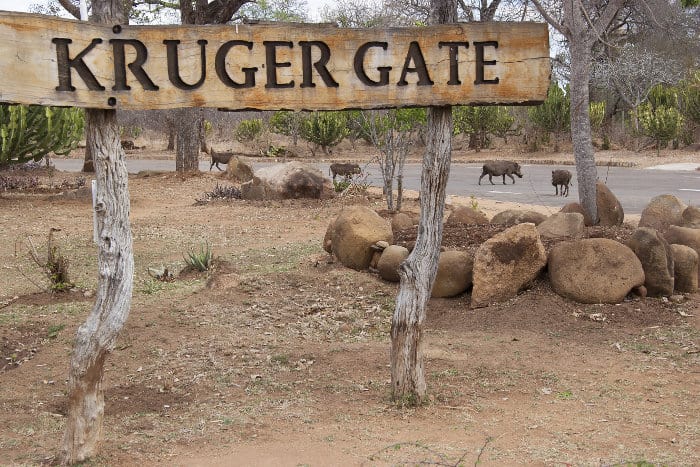
What is the best safari in South Africa?
The Kruger is one of Africa’s oldest and largest protected areas. It is comfortably the best safari in South Africa.
Here there are natural migratory routes and the space that’s needed for wildlife to thrive. Different habitats blur together, supporting an eclectic variety of life. You can safari here for many days, even for many weeks.
Other excellent safari destinations to consider are Addo Elephant National Park, Phinda Private Game Reserve and iSimangaliso Wetland Park. Hluhluwe-iMfolozi Park is the oldest park in Africa and is another great option.
How much does it cost to go on a safari in South Africa?

There’s a safari for every budget here. You can rent a vehicle for a self drive safari, with accommodation at excellent public campsites. Or you can stay at USD 2000 plus a night lodges. Then there’s everything in between.
Safari can be cheaper here because you don’t need expensive or long travel into the wilderness. Plus, it’s possible to go on a safari for just one day, even just one morning. So the experience could cost less than USD 200. Of course, the cost of a really good South Africa safari is far higher.
What is the best time of year to safari in South Africa?
In general, the premier game viewing conditions are from May to September, during the cooler dry season. Wildlife is more visible as there is less vegetation. Plus, wildlife is easier to find as it clusters around what little water remains.
Can you go on safari in Cape Town?

No. Despite some preconceptions, elephants don’t roam around the Cape Town Airport runway, nor do you see rhinos or zebra near the city. However, you can encounter springbok and baboons around Table Mountain National Park.
The closest safari to Cape Town is a choice of private game reserves 2 ½ hours from the city: Inverdoorn and Aquila. Note that these are not authentic safari destinations. Travel 2 ½ hours by flight and there’s a much better experience to have in Kruger.
Is South Africa safe to visit?
South Africa is safe for international visitors. Despite its often unwarranted reputation, most visitors rarely encounter any problems. It is important to take standard safety precautions. However, note that South Africa’s no-go areas are never usually areas that visitors could stumble upon.
To be put off South Africa by negative media reports is to deprive yourself of one of the world’s best travel destinations.
What to Discover

The wildlife
The highlight of South Africa’s animal population is diversity, rather than abundance.
Elephants wander through woodland and across plains, including some of the great tuskers. Giraffe stand like silhouettes on the horizon. Buffalo charge in large herds. Leopards lurk and lions are a common sighting.
Rhinos are the premier highlight and around 80% of the world’s population is here, mostly around Kruger.
So that’s the big five. Then there is springbok, kudu, eland, grysbok, wildebeest, zebra, hippo, cheetah, spotted hyena, jackal, mongoose, crocodile and many more.
Head to the coast and you find great whale and shark populations, giants to complement the savannah experience.
Wild animals no longer roam in the great herds they once did. Those days are gone, mostly due to habitat fragmentation. Yet it’s amazing how many different species you can see in a single game drive or day on safari.
Unique safari experiences in South Africa
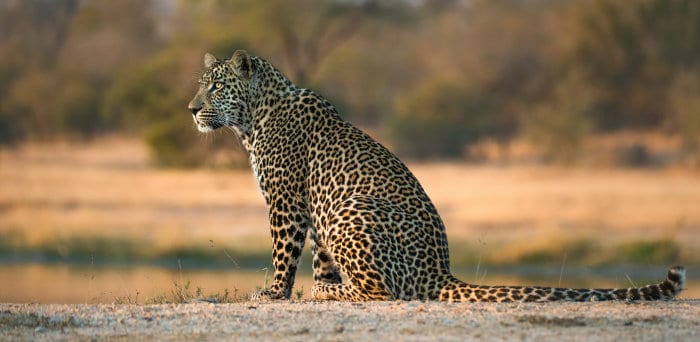
- Following leopards through the trees on a safari in one of the Sabi Sands reserves – nowhere is better in Africa for seeing these spotted cats.
- Driving your own vehicle through vast elephant and lion country, particularly in the Kruger.
- Going on safari for just half a day and seeing four of the big five.
- Sipping on sundowner cocktails as elephants drink from your pool.
- Rhinos! More can be found here than anywhere else in Africa.
- Animal parties! In small game reserves you can see a dozen of the famous species in a single vista.
- Connecting national parks to discover a wide range of habitats, including elephants close to white-sand beaches.
- Going great white shark diving in Gansbaii.
- Continuing the safari by looking for whales, particularly in Hermanus.
Safari experiences common across South Africa
- Contemporary luxury in the bush – South Africa has a superb selection of lodges, particularly for those who aren’t very confident about going on safari.
- Safari plus – combine a morning with big cats with an afternoon of culture or history.
- Admiring over a dozen different species on a single drive.
- Trying something more unique, such as a horseback safari or a walking safari.
- Being led by excellent guides – the standard of guiding is incredibly high in South Africa.
- A focus on food and wine – lodges provide three enormous meals a day, usually served with a view onto the bush.
- Getting confused about where to go – unfortunately South Africa safaris offer a baffling array of options!
Month by Month Guide to South Africa Safari

Almost all of South Africa’s best safari destinations are found in the north of the country. This month by month guide refers to safari in the north and doesn’t apply to a visit to Cape Town or the Garden Route, where the seasons are different.
One quirk about when to visit South Africa is that the best game viewing conditions coincide with the low season. Conversely, the highest season and most expensive time of year is actually the worst month for game viewing. So choose carefully about when to go!
May to September – best dry season game viewing
- Cooler conditions with no rain – it can get pretty cold at night.
- A dry landscape with animals clustered around rivers and waterholes.
- Open, arid plains that make animals easier to spot.
- May to mid-June is low season. Mid-June to August is busier, but not peak season.
October and November – changing climate and low season deals
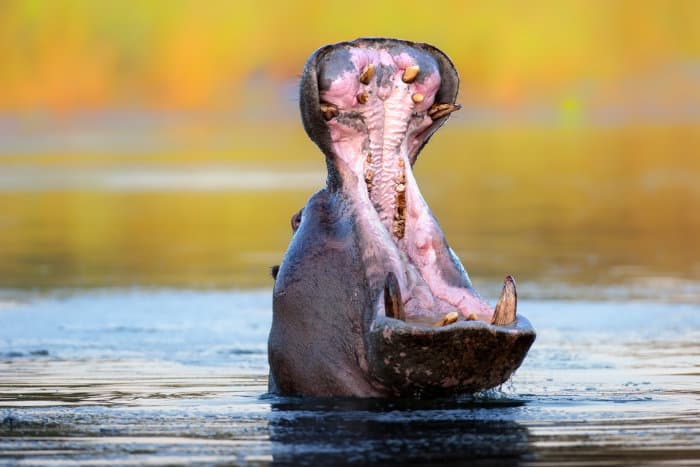
- It’s getting hotter and there is more rain around.
- Game viewing remains good although wildlife begins to disperse as the rains arrive.
- This is low season, with less other visitors and better deals.
- Check the date of the September / October school holiday week – avoid this one week.
December to January – peak season, poor game viewing
- The hottest and most humid time of the year.
- Rains turn the landscape green and spreads wildlife far and wide.
- The long South Africa school holidays happen now, resulting in the parks being packed with local safari goers.
- Huge surcharges are added for Christmas and New Year – they are not worth it.
February to April – a shoulder season
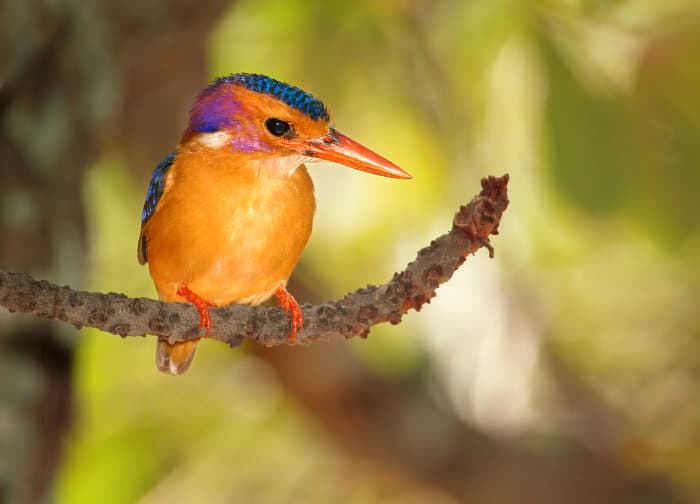
- Manageable weather, sometimes hot and sometimes wet.
- Fair to good game viewing conditions in most destinations.
- Relatively busy but not crowded, a shoulder season for tourism.
Where to Safari in South Africa
There are over 50 potential destinations in South Africa and there’s a huge disparity between the very good and the very bad.
Where to go is crucial. In comparison, choosing where to go in Tanzania or Botswana affects the wildlife and habitat, but usually offers a similar quality of experience.
You can read more about the best safari destinations in South Africa here.
The destinations listed here are those that can provide an authentic connection to your wild side. It is these destinations where the true wonder of an African safari can be realised.
Kruger National Park

Extending for almost 20,000 square kilometres, Kruger National Park is a legend of the safari industry. It’s been a protected area since 1898 and provides refuge for more different mammals than any other in Africa.
Many habitats can be found in the park and these support some 147 large species. To discover even half of these you need at least three days on safari.
Of course it’s the big five that dominates most itineraries. For this the Kruger doesn’t disappoint. In particular, this is one of the best areas in Africa to encounter rhinos and leopards.
Safaris in Kruger are cheap. Local safari operators use the park’s excellent public campsites, making the safari far cheaper versus using a lodge or private camp.
The more adventurous can do a self drive safari through the park, using the same public campsites – these camps must be booked in advance. One route through Kruger is a paved asphalt road, so it’s not even necessary to have a four-wheel drive.
When planning a Kruger safari keep remembering the size of the park. You can’t rush through. Expect to do an absolute maximum of 80 kilometres in one day. If you want to travel far to the north or east you will need a lot of time.
Sabi Sands and other Greater Kruger private reserves
Kruger National Park is the central piece in an unfenced jigsaw puzzle of private reserves and parks stretching across South Africa, Mozambique and Zimbabwe. This larger Great Limpopo Transfrontier Conservation Area measures almost 100,000 kilometres!
Part of this massive puzzle is the Sabi Sands, a world famous series of private game reserves to the southwest of the national park. Wildlife is drawn here by the Sabi and Sands rivers, creating stunning experiences throughout most of the year.
As the reserves are private the only way to go on safari is through one of the camps or lodges in the reserve. Mostly the lodges are high-end and can initially seem expensive. Remember, you’re not just paying for the lodge, the food and the comfort: you’re paying for access to a habitat packed with animals.
In the Sabi Sands there’s a greater concentration of life than anywhere else in South Africa. Compared to Kruger National Park you’ll see more in a smaller area, especially because guides know where iconic animals have their hideouts – notably leopards. So the safari is superb and it’s complemented by modern luxury: think swimming pools and fine wines in the bush.
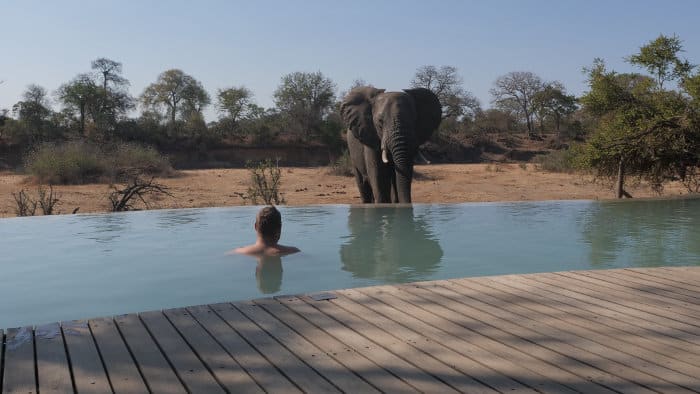
When choosing a safari lodge look closely at where it is located. Those that are closer to Kruger National Park are in the thick of the action. Reserves on the outskirts aren’t as attractive to wildlife as they are closer to roads and noise.
The price of a lodge typically relates to the quality of lodge, so you don’t need to spend more for a better animal experience. Mala Mala is the best as it is the largest and most central private reserve.
With some lodges you can do nighttime drives and game walks as well. Others don’t permit this. With all the wildlife so close together you only need two to three days in the Sabi Sands. For longer stays it’s worth combining Sabi Sands with a camp inside Kruger National Park.
Hluhluwe-iMfolozi Park
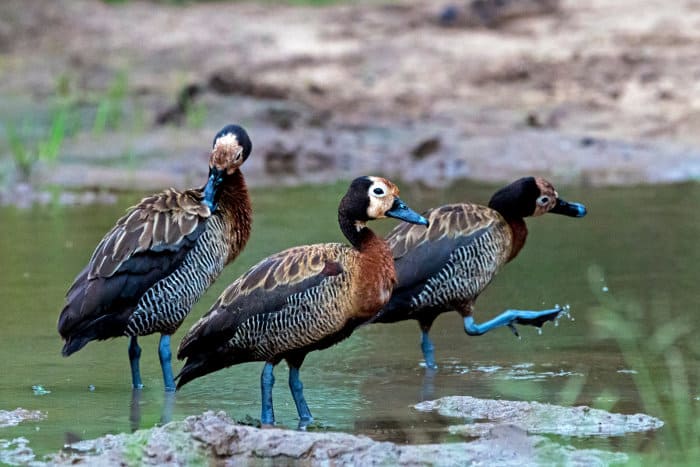
The oldest of all Africa’s protected areas, this park is vastly underrated and packed with life. Rhinos proliferate, elephants walk around the camps, and over 100 species can be seen in just a two-day safari.
It’s a national park and there’s a range of accommodation, including a comfortable and cheap lodge. Most people drive here in their own vehicle, then go on one of the park’s organised game drives. These are very affordable and far more insightful than guiding yourself.
Few other parks in Africa offer so much in just 1000 kilometres of protected land: varied habitats, predator sightings, unusual species, endangered wildlife. It is a little difficult to get to, which somewhat accounts for the relative lack of visitors. Then again, it’s worth spending more time to get here, because it’s such good value once you arrive.
iSimangaliso Wetland Park
Hippos wade close to the Indian Ocean in iSimangaliso, South Africa’s first World Heritage Site. Elephants splash their trunks and elegant antelope emerge from the trees.
Lagoons provide refuge for the animals and you go on canoe and motorboat safaris, sometimes following the channels all the way to a white sandy beach.
iSimangaliso can be combined with Hluhluwe-iMfolozi and also a stay on the beach. Most visitors book into a lodge on the Indian Ocean, then take daytime safari activities.
Addo Elephant National Park

The best safari destination close to South Africa’s Garden Route, Addo Elephant National Park is famous for…well, you guessed it right? Elephants!
There are many hundreds of them and it’s difficult to miss them. Springbok and kudu are just two of the antelope here, joined by one pride of lions and a few hippos.
Although Addo isn’t home to the famous big five, it provides a more authentic safari experience than private game reserves on the Garden Route. Here you actually see a lot of animals and they are truly wild, not fed or confined in any way.
Small private game reserves – the good and the bad
South Africa has many dozens of private game reserves. Other than those in the Great Limpopo Transfrontier Conservation Area, these small reserves have fences.
In most cases, the reserves buy animals from other reserves and parks, then transport them to a private piece of land. In one way this is good – animals are reintroduced to areas where they lived many millennia ago. However, these animals aren’t always being introduced to their natural habitat.
Landscapes can only support so many wild animals. There must be enough food and water for everything. As these private reserves are fenced there is no migration into or away from the reserve.
Instead, animal populations are carefully managed. Working out the best balance is a profession. For example, import two more elephants and there’s no longer enough vegetation for six resident giraffe.
This idea of managing animal numbers is important to understand as it shows how these private game reserves are not truly wild. People are dictating the exact mix of animals, rather than the animals themselves.
In most of these reserves the predators are not allowed to hunt, as eating expensive animals could upset the balance (they are hand fed and kept separate).
So what is the best wildlife balance for these reserves? Easy. A little of everything while making sure the reserve can be advertised as big five. So two elephants, two rhinos, a fenced off area for lions, and a few buffalo (plus a leopard that nobody ever gets to see).
Aquila and Inverdoorn near Cape Town are classic examples of this. Yes, you do see animals, but it’s nothing like being in Kruger or places where wildlife actually thrives.
When picking a private game reserve look carefully at how big it is, as well as whether the predators are kept separate or not. 10,000 hectares sounds like a lot but it’s only 100 square kilometres, less than 0.5% of Kruger National Park’s size!
Popular Add-Ons to a South Africa Safari
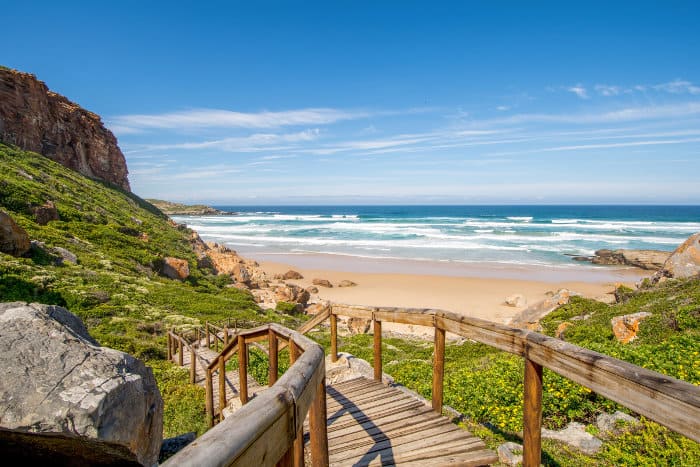
Safari is only the start as you explore South Africa.
- Discover the Mother City and feast on the beauty of Cape Town, a colourful urban experience beneath the shadow of Table Mountain.
- Travel the Garden Route, including great white shark diving in Gansbaai and whale watching in Hermanus.
- Indulge in the Cape Winelands, with Stellenbosch and Franschhoek a journey into the old world.
- Connect with culture and heritage during a stay in Soweto, the township where Mandela once lived.
- Escape to the beach, with fantastic options along the Garden Route and Indian Ocean.
- Explore Zulu culture and check out the coastal city of Durban, both easy additions to a safari in Hluhluwe-iMfolozi.
Expert South Africa Safari Planning
South Africa. Or Botswana? Or Kenya? What’s best for you isn’t what is best for everyone else. While South Africa provides a great safari introduction you may wish for something a little wilder when visiting Africa.
We’ve partnered with top safari operators who can provide personalised information to help you plan a safari, anywhere on the continent. These partners can help you plan an adventure across South Africa and can save you money through local contacts.
Click this link to learn about the service.
Or head to South Africa and come face to face with the great animals!
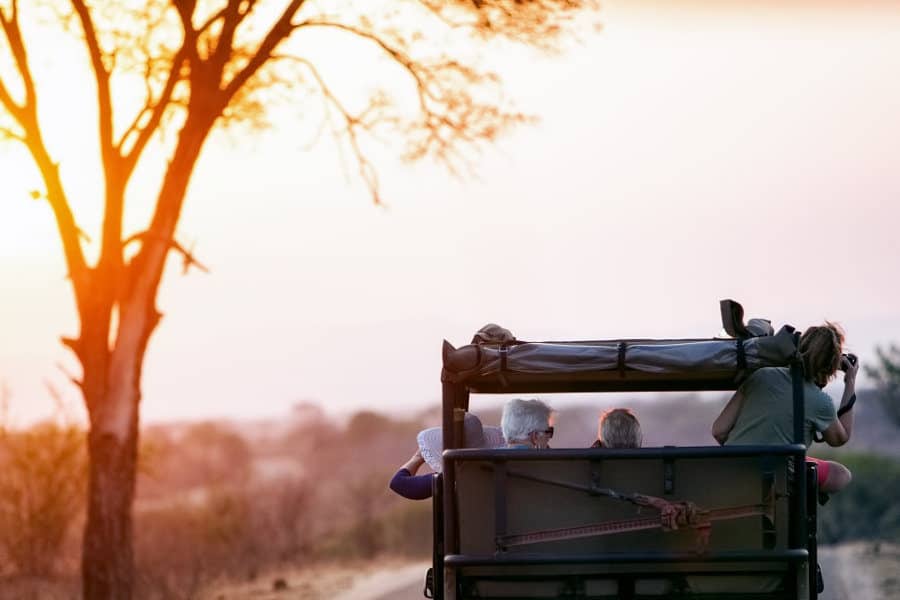
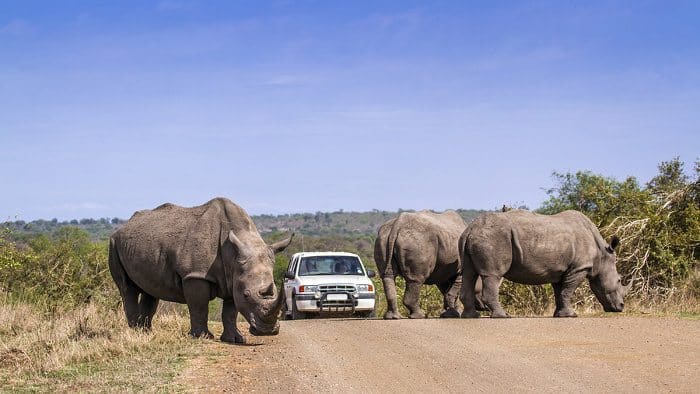

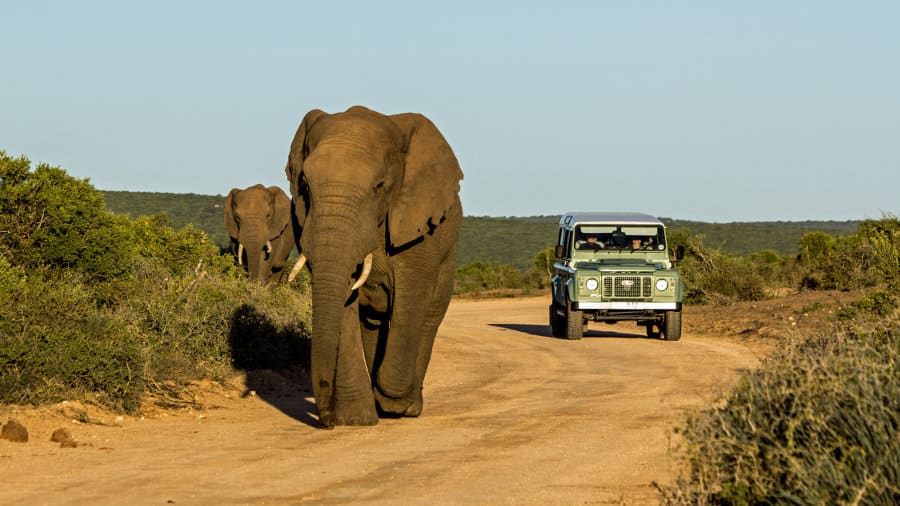
What is required to be a naturalist?
Hi Jan,
I’d say just one word:
Passion!
If this is what you ‘truly’ want to do, you will find a way.
The rest will take care of itself.
South Africa still remains to be the most visited African place and this guide really helps! Thanks for sharing your experiences.
Glad you find it useful, Erika! 🙂